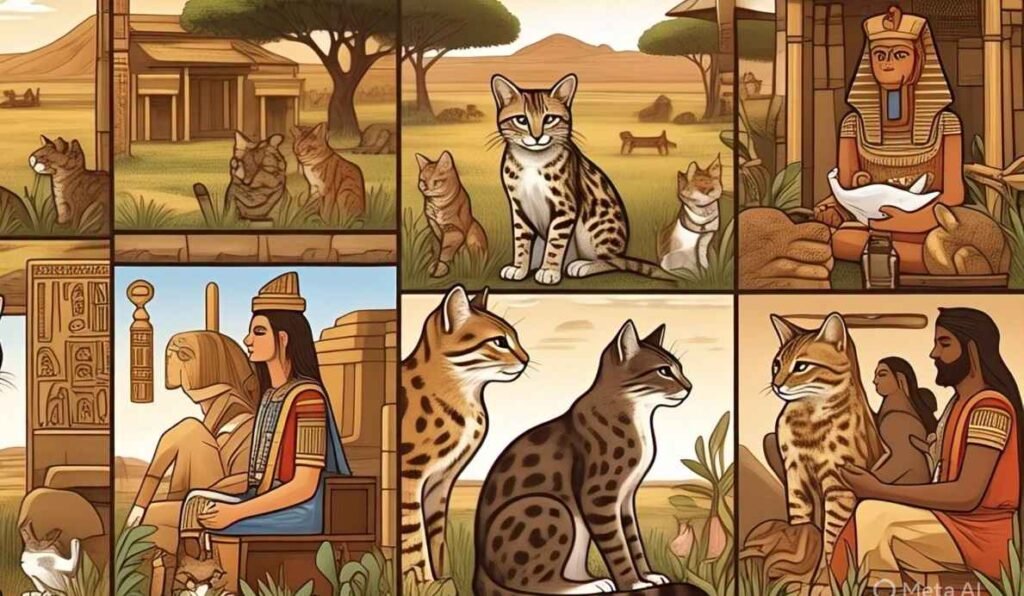The scientific name for the American Domestic Shorthair cat is Felis catus.
The American Domestic Shorthair is a type of domestic cat known for its strong body and easygoing nature.
- Scientific Name: The American Domestic Shorthair’s scientific name is Felis catus.
- Coat: They have short, smooth coats in various colors.

- Differences: Domestic Shorthairs are mixed-breed, while American Shorthairs are purebred.
- Felis Genus: Felis catus belongs to the Felis genus, including wildcats.
- Origins: Domestic cats evolved from Felis silvestris lybica about 10,000 years ago.
- Domestication: Cats were domesticated for rodent control, adapting to live with humans.
- Spread: Cats spread globally via trade routes and were independently domesticated in places like China.
Its scientific name, like other house cats, is Felis catus. Some sources also use the full current name, Felis catus Linnaeus, 1758, and a homotypic synonym, Felis silvestris catus, in scientific texts.
This breed has a short and smooth coat type that comes in many colors.
The name “Domestic Shorthair” tells us about this coat.
Trusted experts like Trupanion say these cats are healthy and friendly, making them great pets for many homes.
Understanding the Scientific Name: Felis catus
Felis catus is the scientific name for the domestic cat.

It comes from binomial nomenclature, where the name is split into two parts: Felis (the genus) and catus (the species).
This system helps to classify and identify all living creatures.
Felis catus represents the domestic cat, while the genus Felis includes various small to medium-sized wildcats.
Felis catus is a species under the Felis genus, which also includes wildcats like the black-footed cat and jungle cat.
The domestic cat is often compared to its wild relatives, such as the African wildcat and the European wildcat.
The scientific name was given by Carl Linnaeus in 1758, in his work Systema Naturae.
This naming system follows the principles of modern biological classification.
In the binomial nomenclature system, each species gets a two-part name.
The first part, the genus name, links it to a group of related animals, while the second part, the species name, identifies the specific animal.
Felis catus reflects the distinct traits of the domestic cat and sets it apart from its wild relatives.
The International Commission on Zoological Nomenclature confirms that Felis catus is a unique species of its own.
Felis catus and other species within the Felis genus share certain traits, like small size, agility, and the ability to stalk prey.
These traits make them well-suited for life in various parts of the world, including Africa, Europe, and Asia.
While there is a subspecies debate, most scientists agree that Felis catus is a distinct species that has adapted to live alongside humans.
What Makes a Cat ‘American Domestic Shorthair’?
An American Domestic Shorthair is a shorthaired cat with mixed ancestry, known for its wide range of coat colors, patterns, and physical characteristics.
It is not a purebred or a recognized breed but has a strong, healthy body and a loving personality shaped by random breeding and genetic backgrounds.
The American Domestic Shorthair is a common type of shorthaired cat found in many homes.
These cats are not from one specific breed or pedigree, but they are still special.
They come from mixed ancestry, which gives them unique coat colors, sizes, and patterns.
Their physical characteristics can vary, making each cat one of a kind.
These cats are often compared to the American Shorthair, which is a purebred cat with a set lineage and consistent breed standards.
But Domestic Shorthairs are shaped by random breeding, giving them mixed heritage and different genetic backgrounds.
Despite this, they often have a sturdy build and show some physical similarities to the American Shorthair.
They’re like the cat version of a mixed-breed dog, often called the “friendly mutts of the cat world.”
Their short fur is easy to care for, and they live happy lives as beloved pets, no matter their unknown lineage.
American Shorthair vs Domestic Shorthair: Are They the Same?
American Shorthair and Domestic Shorthair cats are not the same.
American Shorthairs are a recognized purebred cat with a consistent appearance and personality, while Domestic Shorthairs are mixed-breed cats with more variety in looks and traits.
I’ve lived with both American Shorthairs and Domestic Shorthairs, and I can tell you—they’re each special in their own way.
The American Shorthair is a recognized breed with a defined standard. It has a specific genetic makeup passed down through generations of selective breeding.
Their appearance is consistent, with a muscular build, distinctive coat, and friendly, predictable personality.
They are also purebred and have official documentation from organizations like the Cat Fanciers’ Association (CFA).
In contrast, Domestic Shorthairs are just as lovable but have a more general background.
They are non-pedigreed cats with a mixed lineage and variable traits.
Their personalities and physical characteristics can be quite diverse.
You might see any combination of looks and temperaments.
Though not formally recognized by fancier groups, they are often adaptable, playful, and have unique charm.
Every Domestic Shorthair brings its own mix of background, appearance, and personality into your home.
History and Evolution of Domestic Cats
The History and Evolution of Domestic Cats traces their origins back to the African wildcat (Felis silvestris lybica), which roamed the Near East around 10,000 years ago.
Cats were first attracted to human settlements due to the abundance of rodents and food scraps.
Over time, a symbiotic relationship developed between humans and wildcats, leading to the gradual domestication of cats.
This process is believed to have started in the Fertile Crescent, with cats being valued for their ability to control rodent populations.
As cats became more tolerant of humans, they adapted and began living alongside them.
The spread of domestic cats was furthered by shipping and trade routes, reaching Europe and beyond.
While most domestication occurred in the Near East, there is evidence of independent domestication of cats in places like China.
Cats evolved over time, developing traits like docility and sociability due to genetic adaptations.

Humans selectively bred cats, leading to a wide breed diversity.
Today, domestic cats are loved worldwide, and ongoing research continues to explore their genetic history and evolutionary processes.
The History and Evolution of Domestic Cats highlights how these creatures became integral parts of human life. Early wildcats were drawn to human settlements, where they helped control rodents.
This relationship grew into a mutualistic one, where both cats and humans benefited.
Over time, as wildcats adapted to living near people, the process of domestication began.
Cats’ natural ability to control pests made them highly valued by early human communities.
The spread of cats was greatly influenced by shipping and trade routes, helping them move from the Fertile Crescent to places like Europe.
Some wildcats were also domesticated independently in China, showing the global impact of their evolution.
Through selective breeding, humans developed a variety of cat breeds, contributing to the rich breed diversity we see today.
Genetic studies continue to unveil the evolutionary processes that shaped domestic cats, making them more sociable and docile over time.
Frequently Asked Questions
What is the scientific name for an American Domestic Shorthair cat?
The scientific name for the American Domestic Shorthair cat is Felis catus. This name is used for all domestic cats. It helps scientists group and study cats based on their species.
What is the lifespan of an American Shorthair cat?
The typical lifespan of an American Shorthair cat is 15 to 20 years. With proper care, many live long, healthy lives and stay active as they age.
What is the other name for the American Shorthair cat?
Another name people sometimes use is Domestic Shorthair, but that is different. The American Shorthair is a purebred cat, while Domestic Shorthair refers to mixed-breed cats with short coats.
What are the cons of the American Shorthair?
The American Shorthair is known for being easygoing, strong, and friendly. It has no major downsides. Its calm nature and healthy body make it a great pet for families.
Is Felis catus the same for all cat breeds?
Yes, Felis catus is the same for all cat breeds. This scientific name covers every domestic cat, no matter the breed or coat color.
Can a Domestic Shorthair become an American Shorthair?
No, a Domestic Shorthair cannot become an American Shorthair. The American Shorthair is a purebred cat with set traits, while the Domestic Shorthair comes from mixed ancestry.
What is the difference between feral, stray, and domestic cats?
Feral cats are wild and avoid people. Stray cats once had homes but now live outside. Domestic cats live with people and are used to being around them.
Are American Shorthairs genetically distinct?
Yes, American Shorthairs have a distinct genetic background. They are a recognized breed, which means their looks and traits are passed down through selective breeding.
Conclusion
American Shorthair and Domestic Shorthair cats both make amazing companions. One is purebred with a clear history, and the other is a lovable mix of surprises. No matter which you choose, you’ll enjoy a happy, furry friend with lots of charm.
Disclaimer
The content on Catohouse.com is for informational purposes only. While I am a pet expert and experienced cat blogger, the information provided should not be considered a substitute for professional veterinary advice. Always consult with a licensed veterinarian for any health concerns regarding your pet.
